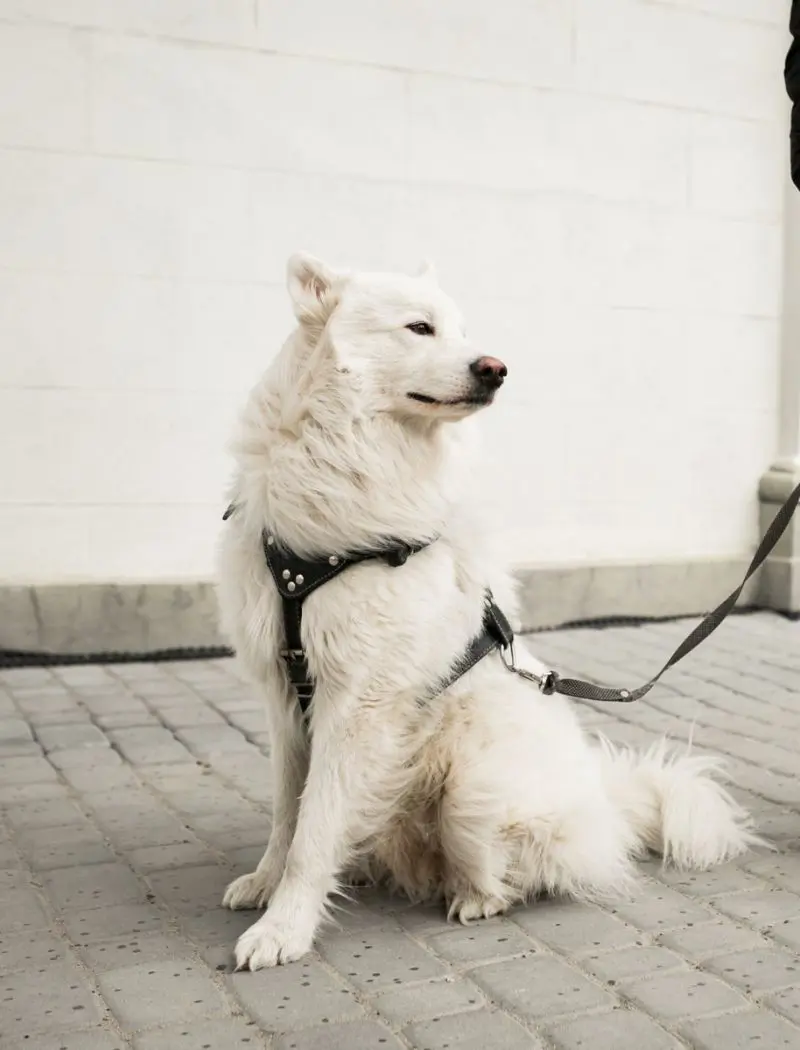How Cold Is Too Cold for Your Dog?
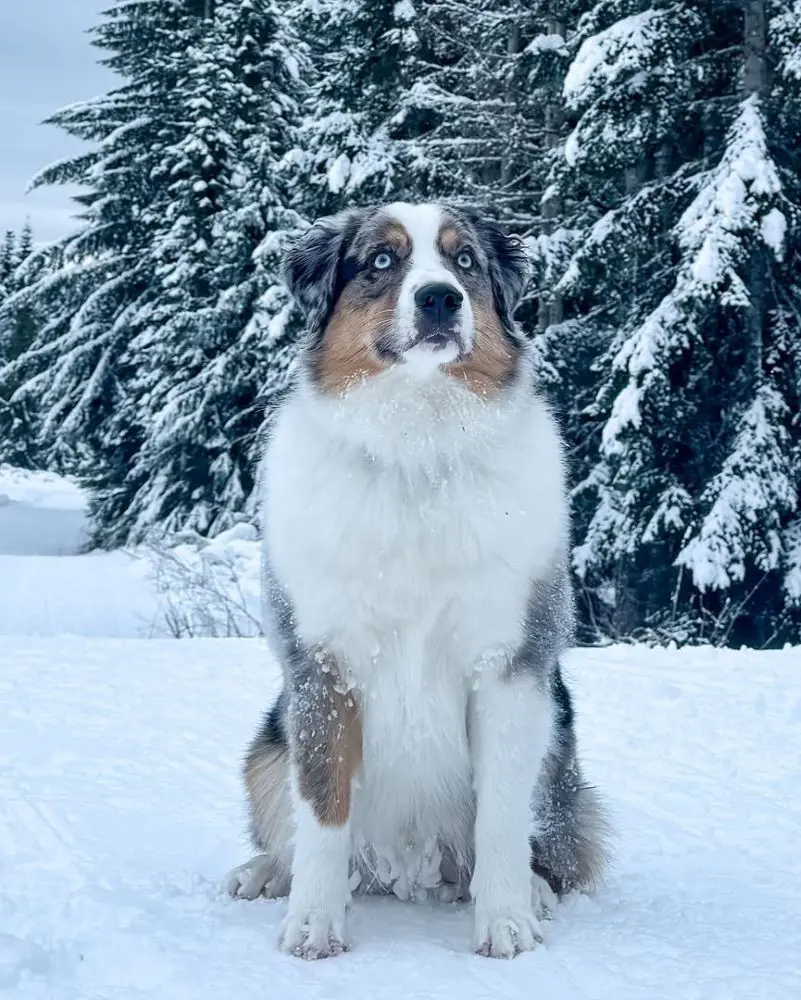
Dogs, as an outdoor athletic species, are naturally drawn towards snow. However, all not dog breeds are designed to handle cold temperatures outside of your home. While, on average, dogs can spend around half an hour outside in freezing conditions. Meanwhile, when the temperature drop is significant, even the most resilient breeds run for cover.
Usually, a dog's fur protects it from the harsh weather conditions. But, when the temperature is below freezing, you'll need extra protective gear or shelter indoors. Today, we discuss the effects of cold on dogs along with how cold is considered too cold for a dog.
What Temp Is Too Cold For Dogs To Be Outside?
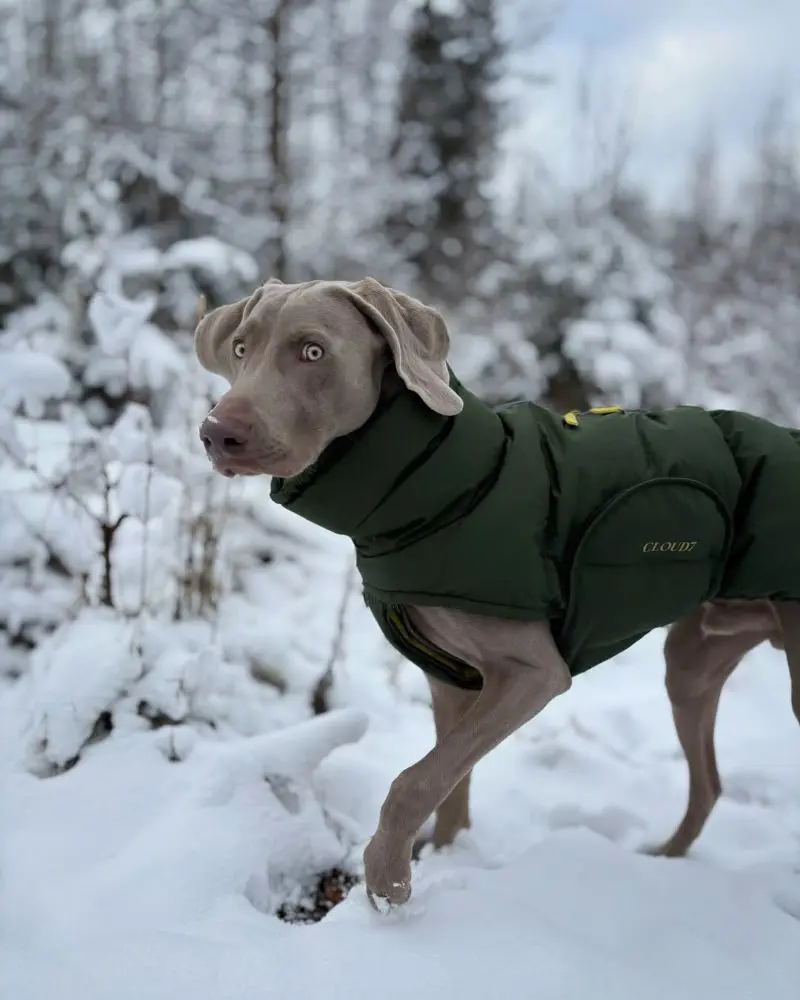
For the average dog with a moderate coat, temperatures below 45°F (7°C) may start to feel uncomfortably cold, especially if exposed for extended periods. When the dog body temperature drops below 32°F (0°C), most dogs are at risk of hypothermia or frostbite without adequate protection, such as a jacket or booties. Prolonged exposure to these temperatures is particularly dangerous for smaller breeds or senior dogs.
In extreme cold, a dog's body needs to work extra hard to maintain its core temperature. This leads to a redistribution of blood flow to vital organs while reducing circulation to extremities such as the ears, tail, and paws. Over time, tissues in the vulnerable areas may freeze in a common phenomenon called frostbite.
Frostbite risk significantly increases at 20°F (-6°C) or lower; dogs exposed to such temperatures can also experience hypothermia.
How Long Can Dogs Stay In the Cold Outside?

Normally, an average household dog can safely stay outside in icy conditions for a short period, depending on the temperature and the breed's tolerance to cold. When temperatures drop below 32°F (0°C), dogs should not stay outside for more than 15 to 30 minutes without proper protection.
Similarly, if the temperature falls to 20°F (-6°C) or lower, outdoor time should be limited to short bathroom breaks or brief walks. However, dogs showing signs of discomfort should be immediately brought into a warmer spot.
Additionally, there are specific breeds, particularly smaller ones, that may not be able to handle even a short period in snow or icy cold conditions. Some will even refuse to go out to answer their nature's call. On the other hand, dogs with longer hair don't usually need extra clothes for spending short durations outside. However, they should be clothed in warm sweaters while spending a longer time outdoors.
Dog Breeds With Most Resistance To Cold
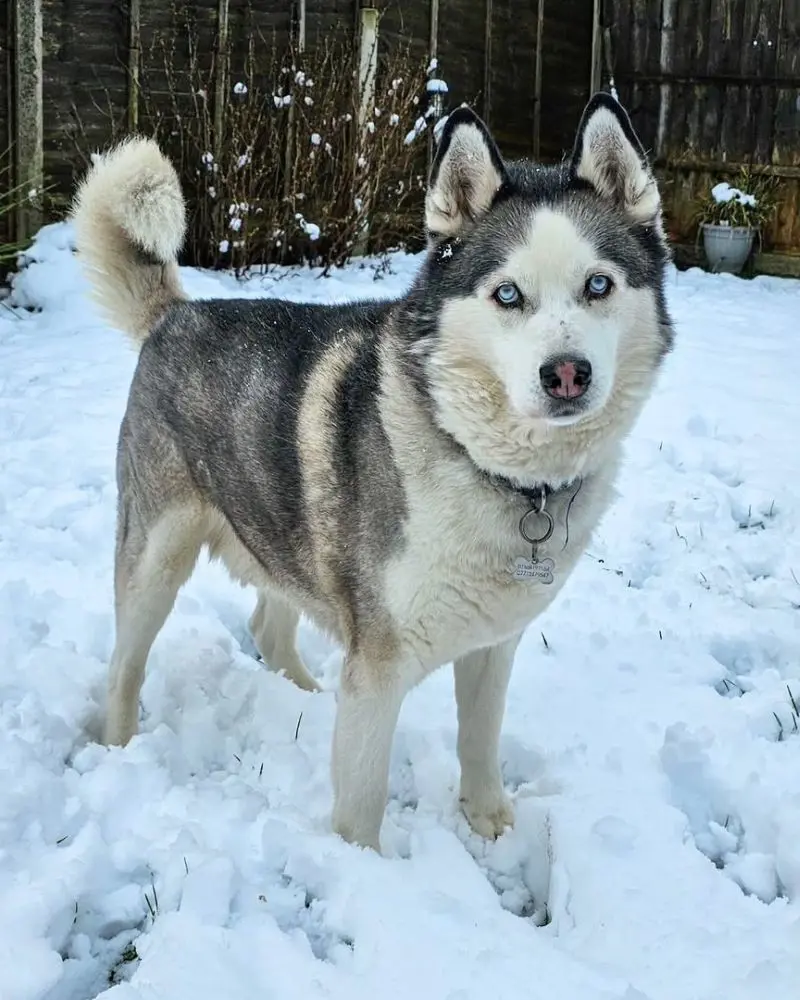
Not all dogs are built the same; while some breeds have zero resistance to cold, others may be particularly bred to work in frigid temperatures. Normally, breeds that originated in Arctic regions are more resistant to the effects of cold, including Siberian Huskies, Newfoundlands, Saint Bernards, and more.
These are some popular dog breeds that were bred to survive in extremely cold temperatures:
1. Siberian Husky
Originally bred by the Chukchi people of Siberia, Huskies were developed to pull sleds over long distances in harsh Arctic climates. The breed is also renowned for its friendly temperament, high energy, and pack-oriented nature, which comes in handy while working with other dogs.
A Husky’s cold resistance lies in its dense double coat; the undercoat is soft and insulating, while the outer coat is water-resistant. Their double coat allows the breed to thrive in temperatures as low as -50°F (-45°C).
Despite their resilience, Huskies can still be vulnerable in extreme cold if left exposed for long periods. Make sure they are not outdoors for an extended duration; direct them to warmth as soon as their duties as a working dog are performed.
2. Alaskan Malamute
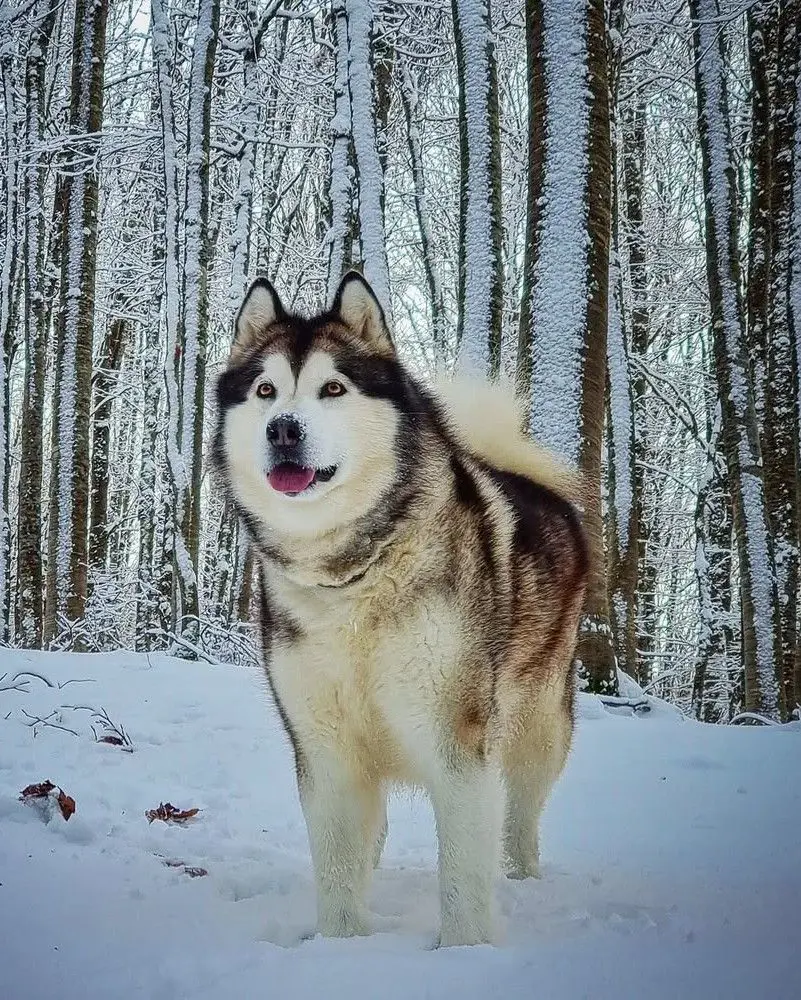
The Alaskan Malamute is one of the oldest Arctic sled dog breeds, originally developed by the Mahlemut Inuit people in Alaska. These dogs were bred to transport heavy loads over long distances in icy conditions. With their powerful build and loyalty, Malamutes became a vital part of the daily lives of Arctic communities.
Blessed with a dense undercoat along with a snow-repelling outer coat, the breed can withstand temperatures as low as -60°F (-51°C). Additionally, their snowshoe-like paws help them traverse icy terrain without slipping.
3. Bernese Mountain Dog
Unlike most dog breeds, the Bernese Mountain Dog (BMD) actually enjoys getting out in the cold. In fact, these canines are infamous for refusing to come into a heated home. Native to the Swiss Alps, the BMD has been historically used for farm work, such as pulling carts and herding livestock.
In icy weather, BMDs can handle short durations outdoors but should not remain outside for long periods without shelter. Long exposure below 0°F (-18°C) poses a risk of frostbite or hypothermia, even for this cold-hardy breed.
4. Saint Bernard
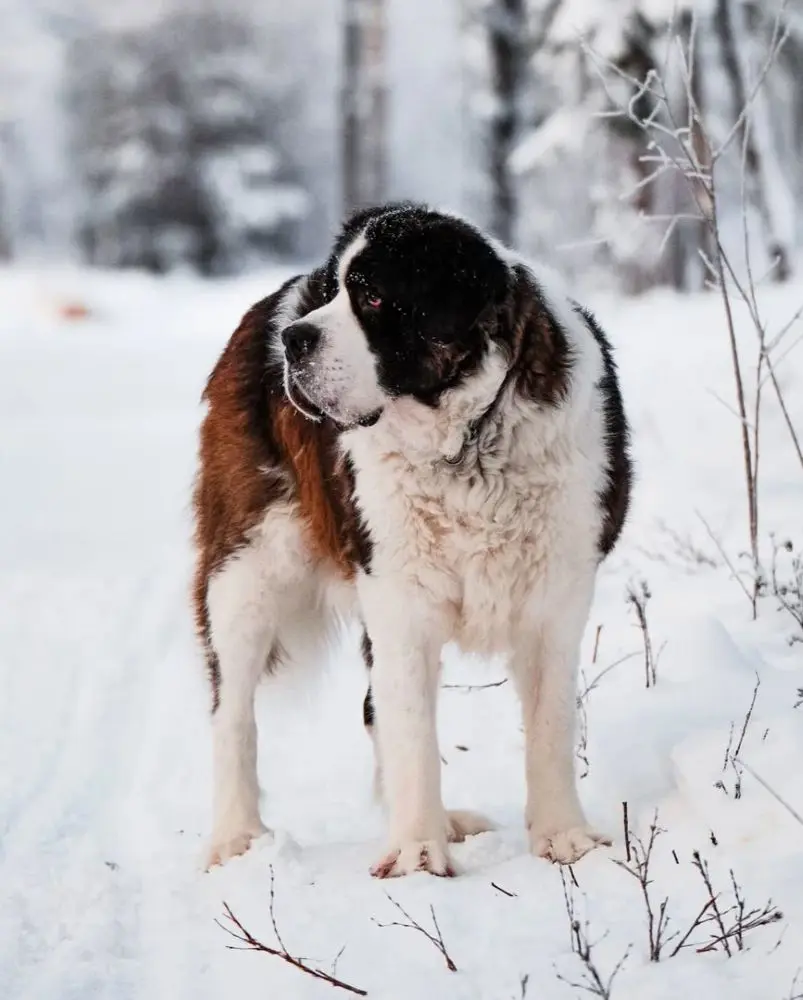
As an arctic breed, the Saint Bernard is naturally equipped to handle cold winters, thanks to their double-layered coat. The undercoat acts as insulation, trapping body heat, while the longer outer coat repels moisture and shields it from snow and freezing winds.
Similarly, the breed's large size and slow metabolism further help them retain heat. Although their threshold to cold is more than most breeds, Saint Bernard may still need some assistance in extremely harsh weather. Temperatures below -20°F (-29°C) can cause frostbite, especially on the ears, tail, and paws. Wet conditions, combined with cold, can also reduce the effectiveness of their coat.
5. Newfoundland
The Newfoundland is a Canadian breed, developed to assist fishermen developed to assist fishermen by hauling nets and rescuing people from icy waters. Their oily outer coat repels water, while the thick undercoat insulates them against freezing temperatures.
As they were specifically designed to survive harsh weather, Newfoundlands can struggle to regulate their body temperature in warm climates. Heat and humidity can quickly lead to overheating or heatstroke, making cooler climates far more suitable for their health and comfort.
Signs Your Dog Is Cold

When feeling extremely cold, dogs indeed exhibit signs that can be easily recognized by the handler or the dog's owner. Normally, unlike a warm day, colder months often trigger reduced metabolism and activity, even literally shutting down the dog's body in frigid temperatures.
Here are some well-known signs of dogs getting too cold that every dog owner should take notice of in winter:
1. Shivering or Trembling
Dogs tend to tremble in two unique situations - either when they are cold or when they are afraid. If they are in a cold environment, such as outside during chilly weather or after being wet, and their body is shaking, it is likely due to the cold. As dogs shiver to generate warmth, you may also notice them huddling, curling up, or lifting their paws off the cold ground.
Meanwhile, shivers triggered when indoors or during moments of stress could be a sign of fear or anxiety. Fear-based shaking is usually accompanied by other signs like cowering, tail tucked between the legs, or wide, anxious eyes. The dog may also appear restless or try to escape the situation.
A key difference between the two is that cold-induced shivering generally stops once the dog is warmed up, while fear-related trembling continues as long as the stressor is present.
2. Hunched Posture
Due to instinctual behavior, dogs often resort to a hunched position when they are cold. By curling their bodies and tucking their tails, they minimize heat loss and conserve body heat.
Wild dogs, like wolves, also exhibit this behavior in freezing temperatures. They often curl up in a similar position to protect themselves from the cold and maintain their body temperature. This shared instinct among domesticated and wild dogs highlights the behavior for survival in harsh climates.
3. Lifting Paws
Cold surfaces, like snow or ice, can cause a dog's paws to feel uncomfortable, and lifting them helps to reduce exposure to the cold. Dogs often lift their limb to protect their sensitive paw pads, which can be vulnerable to frostbite or injury in freezing conditions.
Additionally, dogs may lift their paws to seek relief from the cold by shifting their weight or trying to find a warmer surface. As long exposure to snow can damage the dog's sensitive paws, it's crucial to offer protection like booties or dog clothes to avoid hypothermia.
4. Whining or Barking
When dogs bark without a clear reason in cold weather, it’s often a sign that they are uncomfortable or trying to communicate their need for warmth. Whining is a common way for dogs to express distress, and in cold conditions, it may indicate that they are feeling too cold, anxious, or in pain. The sound normally starts as a soft whimper and escalates if the discomfort continues.
Barking, on the other hand, can serve as a way for dogs to alert their owners to their discomfort. In both cases, the dog is trying to communicate their need for attention or to be brought indoors.
5. Reluctance to Move
Like humans, dogs can become hesitant to move if they’re exposed to extreme cold, especially if they’re not accustomed to it. This behavior serves as a protective mechanism to prevent further exposure to freezing temperatures.
In some cases, dogs may also become immobilized because they feel physical discomfort, such as numbness in their paws or limbs. Additionally, if their body temperature drops too low, they may experience stiffness in their muscles or joints.
Pet parents should understand that their beloved pets are not throwing tantrums by refusing to move. Rather, they should recognize the seriousness of the situation and help their dogs move to a warmer spot.
How To Keep Your Dog Warm In Frigid Temperatures?
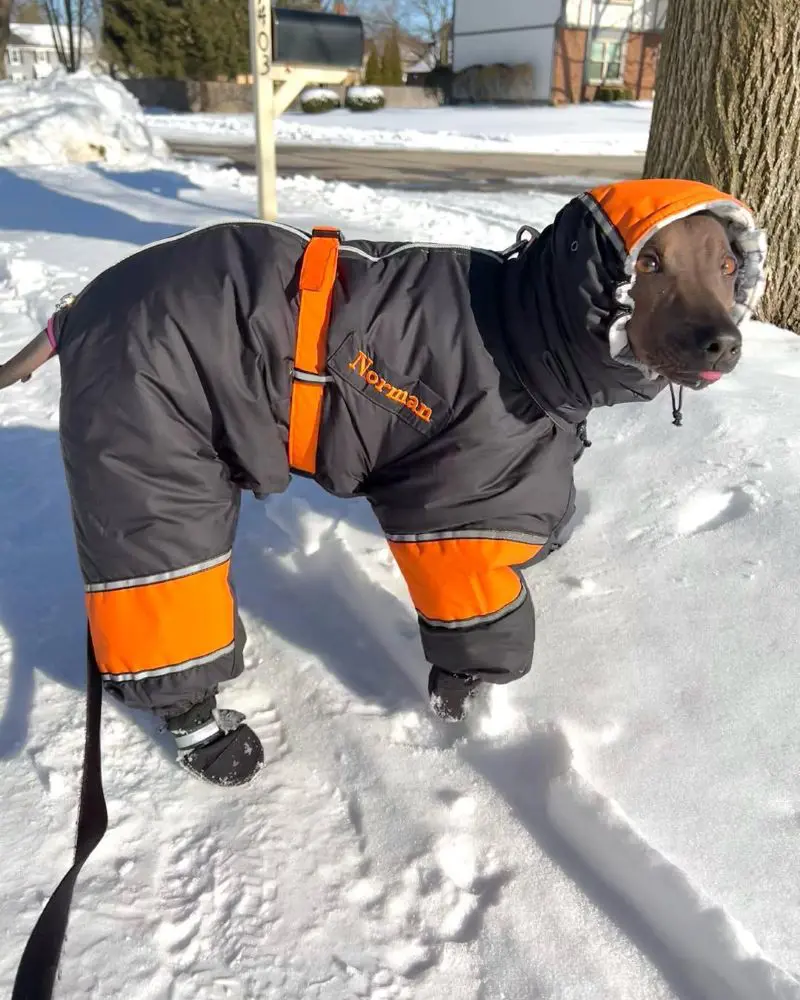
Sub-zero temperatures can be dangerous for a dog's existence, no matter the breed or body insulation. While behavioral changes like shivering, whining, and lifting paws are quite common, these are just mild symptoms that can only hint at the more severe effects. Letting your dogs outdoors during extremely cold conditions can cause damage to the vulnerable organs, even causing the dog's death in some cases.
But, worry not. Here are a few measures to keep your dog warm and protected in the chilliest season:
1. Provide Warm Bedding
For winter, the warmest bedding provides both insulation and comfort. High-quality materials like memory foam or orthopedic beds are ideal, as they help retain body heat and offer joint support, especially for older dogs or those with arthritis.
Similarly, beds with a water-resistant or waterproof cover are also beneficial; these products can prevent moisture from seeping into the bedding, which can make it cold and uncomfortable. Additionally, a fleece or wool blanket over the bed provides extra warmth by trapping heat close to your dog’s body.
2. Use Dog Jackets or Sweaters
Dog clothes, while stylish, are not all about fashion. Accessories like dog jackets or sweaters are made with high-quality materials that trap the heat while keeping the cold away with fine insulation.
You can purchase a functional dog jacket or sweater for as low as $20. However, high-quality products may cost slightly more expensive due to the quality of materials and time spent on the design.
3. Paw Protection
Dogs have sensitive paws that are vulnerable to frostbite, especially if exposed for a significant amount of time. Made with insulating materials, dog boots don't just keep the canine warm, they also offer valuable protection from sharp objects and rough surfaces.
Besides the thermal properties, dog shoes are mostly non-slip; they use a combination of loops and velcro to secure the shoes against the dog's feet. These products are optional during warmer days; however, make sure to put them on your dog's feet before an outing in winter.
4. Limit Outdoor Time
The time allocated for outdoor activities depends on your dog's breed, coat type, and overall health. For most dogs, 15 to 30 minutes is usually sufficient for bathroom breaks and light exercise. Dogs with thicker coats or higher cold tolerance may handle longer periods, but it's essential to supervise them during their extended stay.
Reducing outdoor time during winter can prevent your dog from becoming overly cold or experiencing frostbite and hypothermia. When dogs come in contact with freezing temperatures for extended periods, their body struggles to maintain warmth, leading to discomfort and potential health risks. Shortening outdoor walks or playtime minimizes their exposure to the cold.
5. Increase Food Intake
As a pet owner, you must have noticed an increase in your dog's appetite, particularly during winter. This extra food is vital as their body requires extra energy to maintain warmth in cold weather. As dogs burn more calories to regulate their body temperature in low temperatures, they need additional food to replenish those lost nutrients.
Besides maintaining energy levels, feeding more can is also good for the dog's immune system. However, overfeeding should be avoided to prevent weight gain.
Recent posts
Dogs
What Are Dogs Afraid Of? 10 Common Dog Fears And Phobias
Becoming a dog owner comes with certain responsibilities, including identifying their fears and phobias. From an unpleasant sound to an unfamiliar scent, many factors can trigger a fear response. Understanding a dog's psychology can be complicated; a...
How To Put A Dog Harness On: Step By Step
A dog harness is a popular and safe alternative to a neckband that is designed to distribute pressure more equally across the structure while walking or running. They are worn around the chest and torso, making them a comfortable option for many dogs...
15 Webbed Feet Dogs Breeds That Can Swim
Dogs often become excited when they are near a water body like a pool, river, or beach. Unlike cats, canines are not wary of water and are usually seen enjoying their swims at their nearby water hole. However, enthusiasm alone doesn't dictate a dog's...
20 Fun Activities For Dogs During Winter
Winter can be a great time to embrace the chilly season with creative activities that keep your furry friend happy and entertained. They provide a perfect opportunity to explore unique ways to bond with your dog. From snowy outdoor experiences to coz...
How To Introduce Baby To Dog: A Step By Step Guide
Adding a new baby to your home is exciting, but it can also be a big change for your dog. A dog's natural curiosity involves a patient, prepared, and considerate introduction to a newborn baby. A smooth transition is important for the safety of your ...
Do Dogs Cry? What Does Their Tears Mean
Dogs are known to shed tears as a way to lubricate their eyes and not because of sadness or emotional pain like humans. Tears in dogs may indicate medical issues like eye infections or blocked tear ducts that may cause discomfort to them. It is very ...

